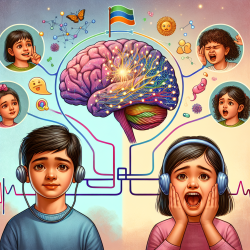Introduction
In the realm of pediatric cardiology, imaging techniques that involve ionizing radiation, such as cardiac computed tomography (CT) and fluoroscopy, are indispensable for diagnosing and managing congenital and acquired heart diseases (CAHD). However, these procedures also pose potential risks due to radiation exposure. The research article "Radiation Safety in Children With Congenital and Acquired Heart Disease" provides a comprehensive overview of strategies to optimize radiation doses while maintaining diagnostic efficacy. This blog aims to translate these research findings into actionable insights for practitioners.
Understanding the Risks and Benefits
Children with CAHD are particularly vulnerable to the effects of ionizing radiation due to their longer life expectancy and the higher susceptibility of their developing tissues to radiation-induced damage. The research highlights the importance of balancing the necessity of these imaging procedures with the potential long-term risks, such as an increased lifetime risk of cancer.
Key Recommendations for Practitioners
- Justification and Optimization: Ensure that every imaging procedure is clinically justified and optimized to use the lowest possible radiation dose that still achieves diagnostic quality.
- Education and Communication: Educate patients, caregivers, and healthcare providers about the benefits and risks of imaging procedures. Informed discussions can lead to better decision-making and reduced anxiety.
- Standardization of Dose Metrics: Advocate for the standardization of dose metrics across different imaging modalities to facilitate comparative effectiveness studies and improve patient safety.
- Programmatic Approaches: Implement programmatic quality controls, such as dose monitoring and adherence to best practices, to ensure sustained improvements in radiation safety.
Implementing Research Insights
Practitioners can enhance their skills by integrating the research findings into their clinical practice. This involves adopting a patient-centered approach to imaging, focusing on informed decision-making, and utilizing programmatic approaches to dose monitoring. By doing so, healthcare providers can ensure that imaging procedures are performed safely and effectively, minimizing radiation exposure without compromising diagnostic quality.
Encouraging Further Research
The research underscores the need for ongoing studies to refine dose optimization techniques and develop standardized dose metrics. Practitioners are encouraged to participate in or support research initiatives that aim to improve radiation safety in pediatric cardiology.
Conclusion
By implementing the recommendations from the research, practitioners can significantly enhance radiation safety in pediatric cardiology. This not only protects the vulnerable population of children with CAHD but also ensures that the benefits of medical imaging are maximized while minimizing potential risks. To read the original research paper, please follow this link: Radiation Safety in Children With Congenital and Acquired Heart Disease.










